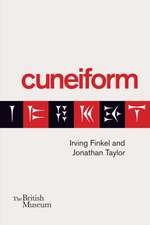The Shah and the Ayatollah: Iranian Mythology and Islamic Revolution
Autor Fereydoun Hoveydaen Limba Engleză Hardback – 27 feb 2003 – vârsta până la 17 ani
Preț: 361.10 lei
Preț vechi: 500.16 lei
-28% Nou
Puncte Express: 542
Preț estimativ în valută:
69.10€ • 73.89$ • 57.61£
69.10€ • 73.89$ • 57.61£
Carte tipărită la comandă
Livrare economică 18 aprilie-02 mai
Preluare comenzi: 021 569.72.76
Specificații
ISBN-13: 9780275978587
ISBN-10: 0275978583
Pagini: 138
Dimensiuni: 140 x 216 x 17 mm
Greutate: 0.3 kg
Editura: Bloomsbury Publishing
Colecția Praeger
Locul publicării:New York, United States
ISBN-10: 0275978583
Pagini: 138
Dimensiuni: 140 x 216 x 17 mm
Greutate: 0.3 kg
Editura: Bloomsbury Publishing
Colecția Praeger
Locul publicării:New York, United States
Notă biografică
FEREYDOUN HOVEYDA is a Senior Fellow with the National Committee on American Foreign Policy. He also is a former Iranian Ambassador to the UN (1971-1978). In 1972 and 1973, he chaired the UN Committee on International Terrorism created after the assassination of Israeli athletes at the Olympics in Germany. A widely published author of fiction and nonfiction, is Les neiges du Sinai won the Leopold Senghor Award in 1973.
Cuprins
The Shah and the AyatollahThe Enduring Mythology of PersiaThe Unwritten Constitution and the "Hidden Imam"Tradition vs Renovation














